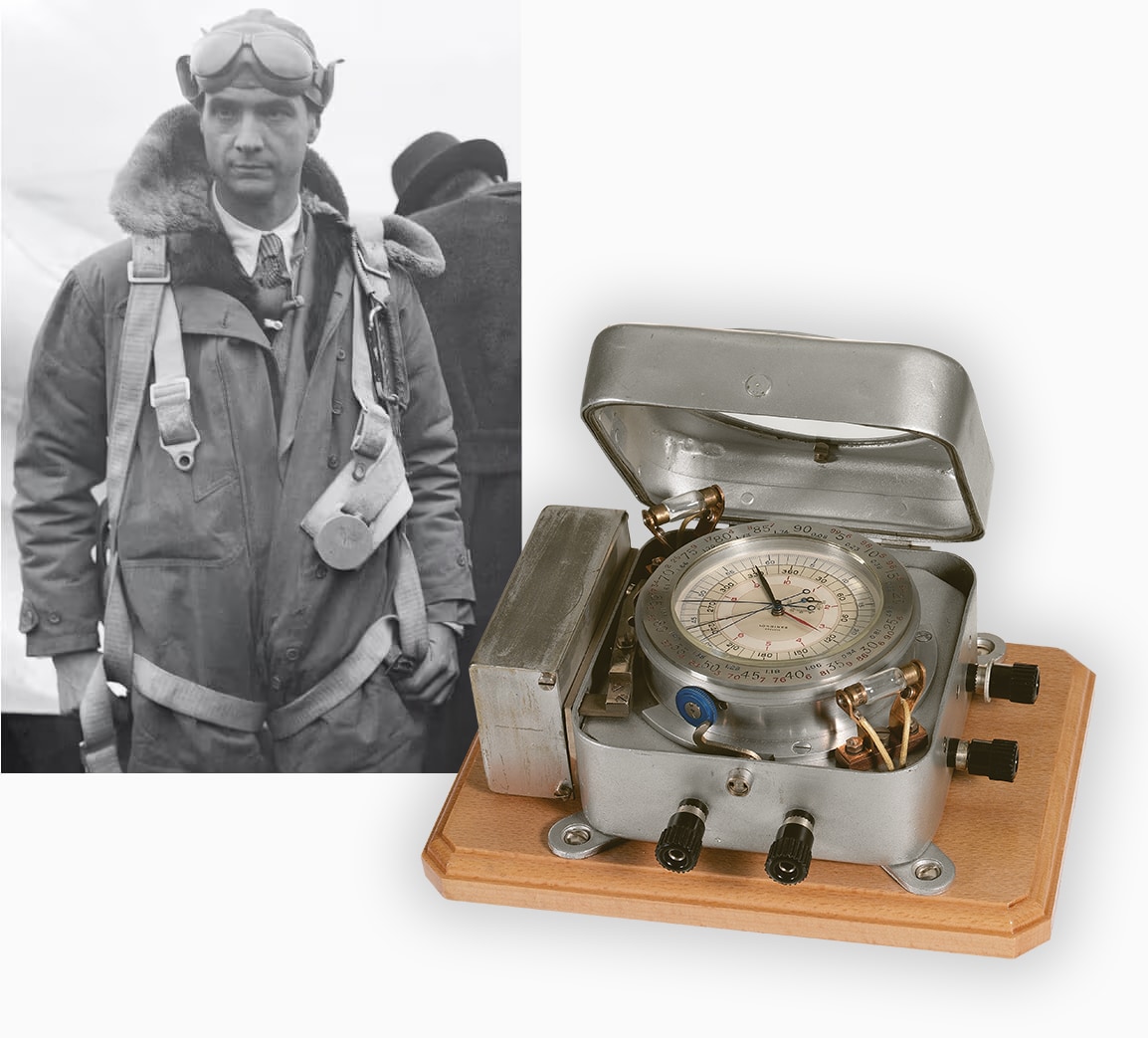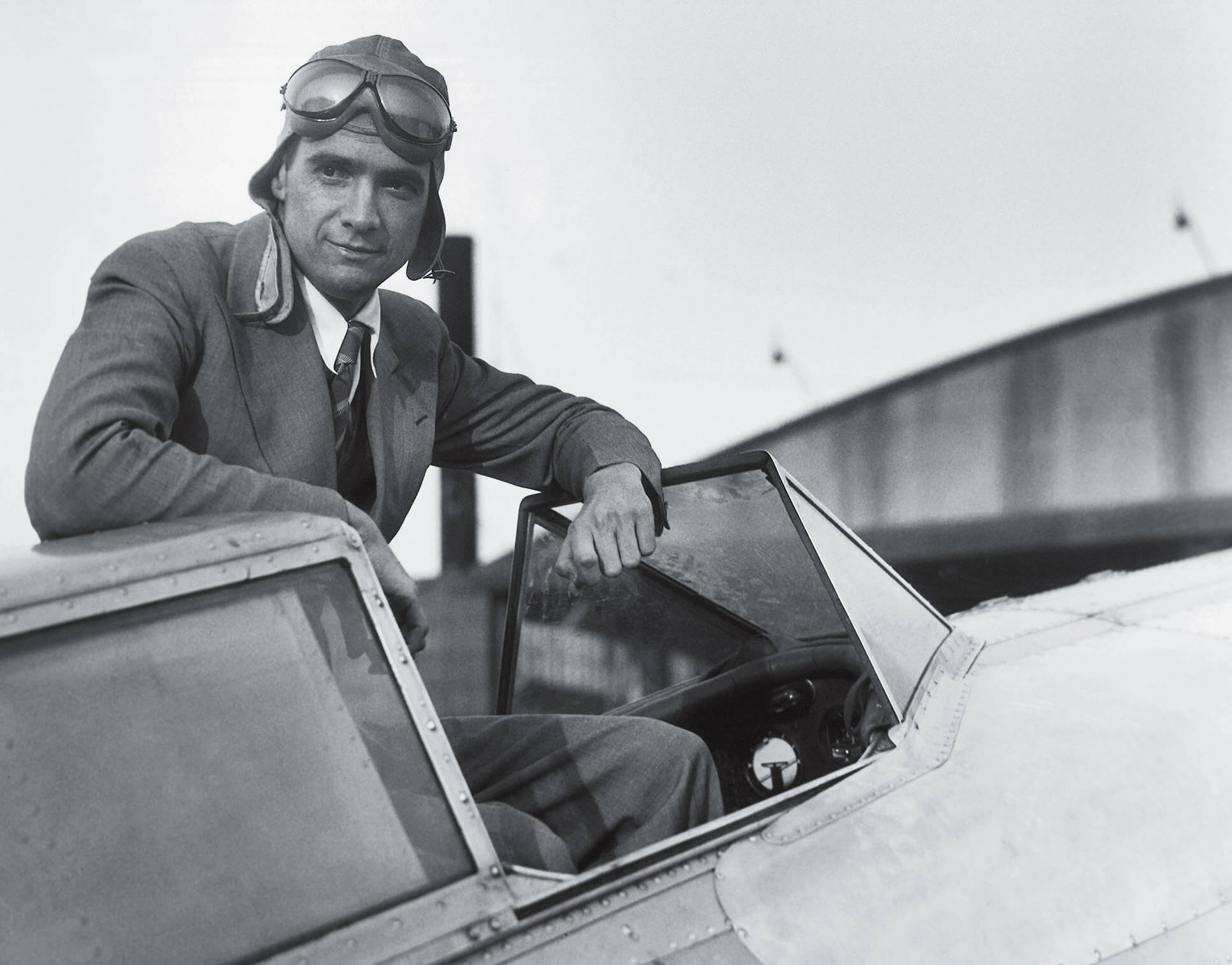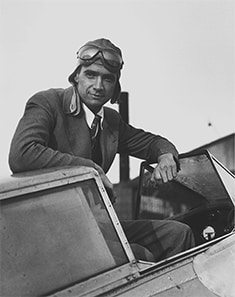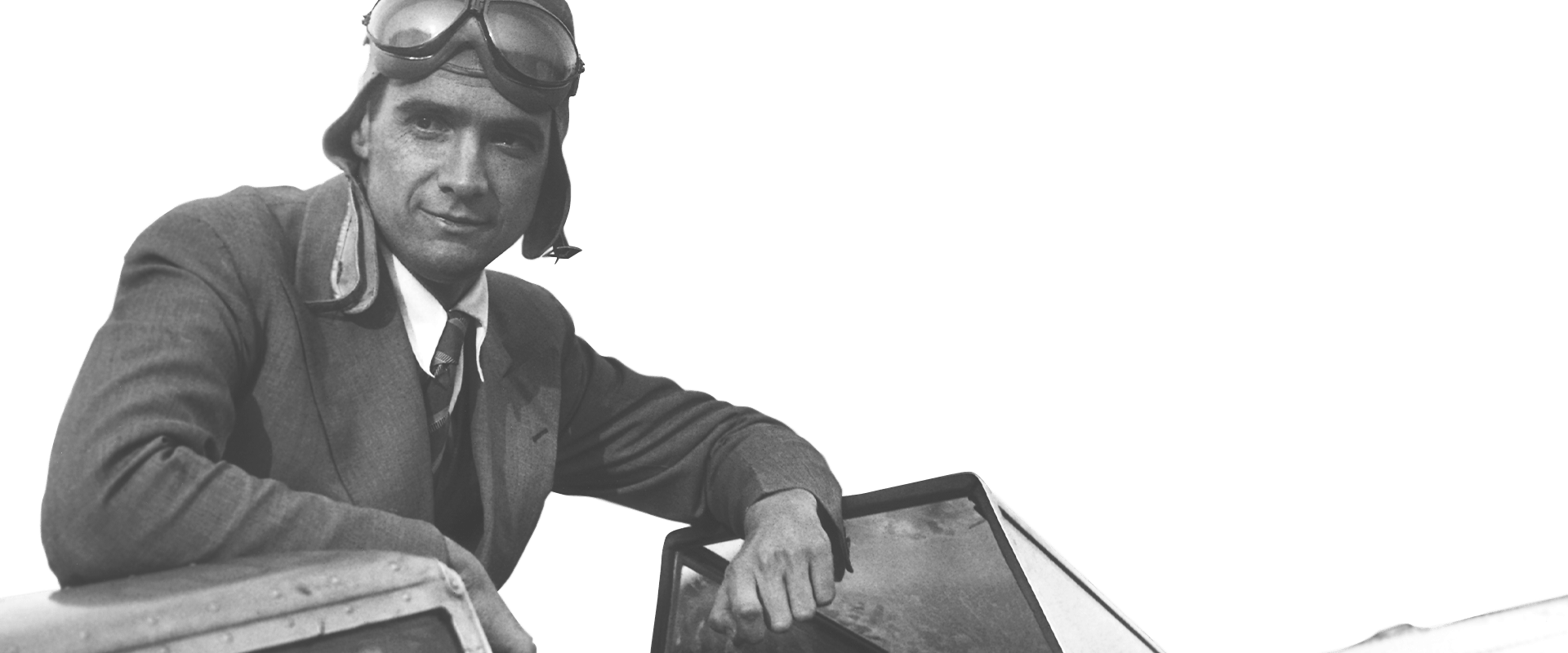
Howard Hughes’ Lockheed Model 14-N2 Super Electra arrives at Floyd Bennett Field, Long Island, New York, on 14th July 1938 at 2:34 p.m.
1905-1976
In July 1938, the fastest man in the air took just 3 days, 19 hours and 14 minutes to circumnavigate the world in his Lockheed Super Electra: Howard Hughes broke the previous record by almost four days. When Hughes and his crew stopped to fill his airplane with gasoline at Le Bourget airport near Paris, Longines in Switzerland received the following telegram from its French subsidiary: “Aircraft of Howard Hughes equipped exclusively with aviation chronometers and chronographs by Longines”. Hughes finally arrived at Floyd Bennett Field near New York, after flying a distance of 14,800 miles (23,818 km) around the Northern Hemisphere.
The watches in Hughes’ Lockheed were essential tools. Invented in 1936 to facilitate navigation in fast moving aviation, the Longines Siderograph did not display usual civilian time, but rather sidereal time in hour angles, minutes and minute arcs. Sidereal time measures the rotation of the earth referring to the stars, not the sun, enabling the navigator to determine the position of an airplane at night or over the sea, before the era of modern GPS-instruments. Longines equipped the Siderograph with the most accurate movement manufactured at the time, placing it in a heat-toughened aluminum case. This material was perfectly suited for aviation because of its lightweight and anti-magnetic nature.
The watches in Hughes’ Lockheed were essential tools. Invented in 1936 to facilitate navigation in fast moving aviation, the Longines Siderograph did not display usual civilian time, but rather sidereal time in hour angles, minutes and minute arcs. Sidereal time measures the rotation of the earth referring to the stars, not the sun, enabling the navigator to determine the position of an airplane at night or over the sea, before the era of modern GPS-instruments. Longines equipped the Siderograph with the most accurate movement manufactured at the time, placing it in a heat-toughened aluminum case. This material was perfectly suited for aviation because of its lightweight and anti-magnetic nature.
Howard Hughes was an enthusiastic aviator and built aircrafts at his own company (Hughes Aircraft). On 13th September 1935, Hughes set the landplane airspeed record of 352 mph (566 km/h) in his sleek H-1-Racer in California. This was the last time in history that the world record for airspeed was set in an aircraft built by a private individual. A year and a half later, on 19th January 1937, Hughes set a new transcontinental airspeed record by flying non-stop from Los Angeles to Newark in 7 hours, 28 minutes and 25 seconds. His average ground speed during the flight was an impressive 322 mph (518 km/h).
Howard Hughes found himself alone from an early age: his father died when he was 18 and his mother when he was 16. In 1925, the young Hughes inherited his father’s company, a drill production company for the oil industry. In the following years, Hughes managed to multiply the family fortune with his ventures and investments: as a film producer and entrepreneur in aviation, airlines, electronics, media, manufacturing, real estate and petroleum drilling. One of the wealthiest men of his time, he donated much of his fortune to philanthropic causes in health care and medical research. Later in life, Hughes became known for his eccentric behaviour and reclusive lifestyle. Hollywood-star and longtime-friend Ava Gardner described the successful aviator in her autobiography as “painfully shy, completely enigmatic, and more eccentric... than anyone [she] had ever met”.
Howard Hughes found himself alone from an early age: his father died when he was 18 and his mother when he was 16. In 1925, the young Hughes inherited his father’s company, a drill production company for the oil industry. In the following years, Hughes managed to multiply the family fortune with his ventures and investments: as a film producer and entrepreneur in aviation, airlines, electronics, media, manufacturing, real estate and petroleum drilling. One of the wealthiest men of his time, he donated much of his fortune to philanthropic causes in health care and medical research. Later in life, Hughes became known for his eccentric behaviour and reclusive lifestyle. Hollywood-star and longtime-friend Ava Gardner described the successful aviator in her autobiography as “painfully shy, completely enigmatic, and more eccentric... than anyone [she] had ever met”.
1905
24th December: Howard Hughes was born in Harris County, Texas (USA).
1930
15th November: Hughes produced and released the aviation war film “Hell’s Angels”, one of the first sound action films. More than one hundred airplanes were used during shooting.
1935
13th September: flying his H-1 aircraft Hughes set the landplane airspeed record of 352 mph (566 km/h) over his test course near Santa Ana, California.
1937
19th January: Hughes broke his own speed record for transcontinental U.S. flights. He took off at Burbank, California, and
landed 7 hours, 28 minutes and 25 seconds later in Newark, New Jersey. He reached an average ground speed of 322 mph (518 km/h).
1938
14th July: Howard Hughes set a new record for the fastest around-the-world flight in his Lockheed 14 N Super Electra in 3 days, 19 hours and 14 minutes.

The Longines Siderograph enabled pilots to navigate using the stars. This model was in Howard Hughes’ aircraft during his record-breaking around-the-world flight in July 1938.

Howard Hughes in a Northrop Gamma aircraft at Newark airport, New Jersey, on 14th January 1936.

